Dive into a world of discovery with three captivating picture books that bring foundational science concepts to life! From clapping hands to kookaburras in the bush and the surprising movements of plants, these stories ignite young learners’ curiosity about their bodies, animal habitats, and the plant kingdom. Each book inspires engaging, hands-on activities – exploring body parts through movement, identifying animals with descriptive clues, and uncovering the edible secrets and anatomy of plants. Get ready for interactive learning and free resources that make science an adventure!
Book 1: Here are My Hands by Bill Martin and John Archambault

Here Are My Hands by Bill Martin and John Archambault is a staple book in my classroom when introducing young learners to the parts of the human body and their functions. I love how the rhythmic, repetitive text and vibrant illustrations engage children while helping them recognise their own external features—like hands for clapping, feet for running, and eyes for seeing. It’s a fantastic resource for supporting the Foundation Year science outcome (AC9SFU01), as it encourages body awareness and sparks meaningful conversations about how our bodies help us interact with the world. I also find it supports early language development and creates plenty of opportunities for interactive learning.
Inspired by the book, I developed an interactive activity where students explore body parts and their functions through storytelling, movement, and craft. We start by reading the story together, and I encourage the children to respond with body-based actions as each part is introduced. Then, we play a “Body Part Action Freeze” game—connecting movement to function in a fun and memorable way. To finish off the lesson, students use playdough or craft materials to create their own person, naming each body part and explaining what it does. This hands-on experience helps reinforce the learning intention of identifying external body parts and their functions (AC9SFU01), while also encouraging creativity, language development, and physical engagement. You can find this activity and download the free resources here.

Book 2: I See a Kookaburra! by Steve Jenkins and Robin Page
“I See a Kookaburra!” by Steve Jenkins and Robin Page is one of my favourite picture books to use when introducing young learners to the diversity of animal habitats. I love how the stunning illustrations and simple, engaging text take children on a global journey—from the Australian bush to deserts and jungles—encouraging them to look at and name animals in their natural environments. I’ve noticed that this book aligns beautifully with the Foundation Year science outcome (AC9SFU01), as it helps students recognise the external features and basic needs that support living things in their specific habitats. It also refers to the Year 1 outcome (AC9S1U01) by introducing how different environments provide essential resources for survival and growth. The “search-and-find” format keeps children engaged while fostering their curiosity about biodiversity and the interconnectedness of ecosystems.

To extend this learning, I included the “Who Am I” activity inspired by the book. By focusing on the animals from the Australian bush section, I was able to guide students in looking at and describing external features, which directly supports the Foundation science outcome. The interactive read-aloud followed by the guessing game provided a fun and dynamic learning environment where students actively participated, practised using descriptive language, and expanded their animal-related vocabulary. I also included explicit teaching of new words to further support language development. You can find this activity and download the “Who Am I” activity for free here.
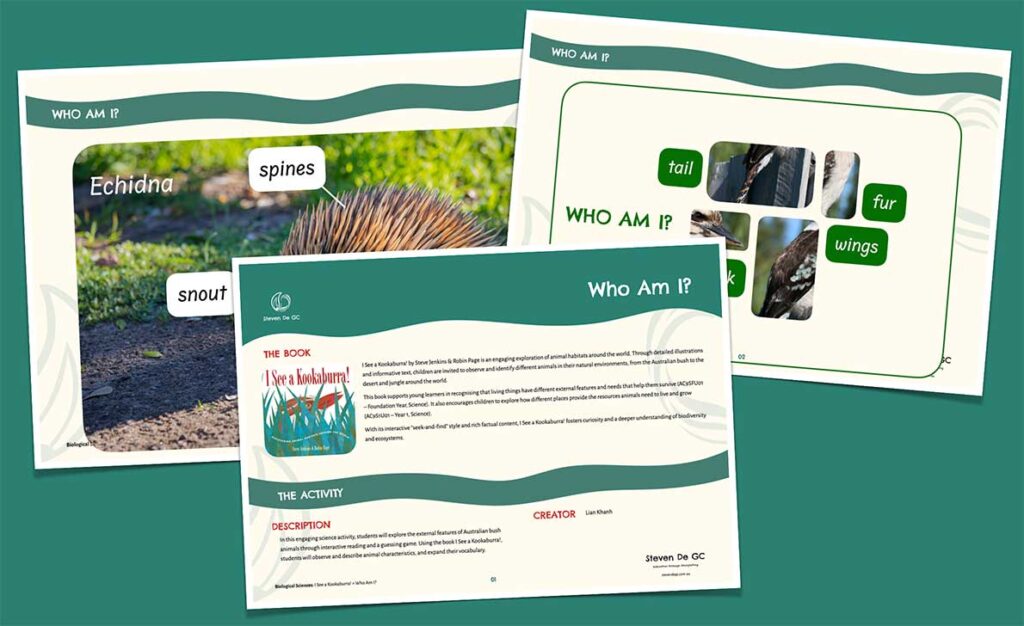
Book 3: Plants Can’t Sit Still by Rebecca Hirsh
“Plants Can’t Sit Still” by Rebecca Hirsh offers a truly captivating and poetic exploration into the often-overlooked movements, growth patterns, and environmental responses of plants. The book, with its engaging narrative and vibrant illustrations, really makes you realise the fact that plants aren’t static at all. It beautifully reveals how they creep, climb, curl, and reach for the sunlight. I can see how this would help young readers look at and understand the external features of plants and their crucial role in survival (AC9SFU01 – Foundation Year, Science). Furthermore, I understand the book also supports learning about the fundamental needs of plants – water, sunshine, and room to grow – highlighting that, just like us, plants have basic requirements (AC9S1U01 – Year 1, Science). Overall, I think “Plants Can’t Sit Still,” with its dynamic storytelling and rich scientific concepts, would undoubtedly generate curiosity about the natural world and inspire children to really examine plants in action.

Inspired by the wonders of the plant world, the “What Parts Do We Eat?” activity explores another fascinating aspect of botany. I’ve always been intrigued to consider which parts of plants become the delicious food on our plates. This activity encourages children to recognise and understand the different structures of plants that we consume, from the roots of carrots to the juicy fruit of apples. Through interactive exercises, they will discover how various plant parts, such as stems, leaves, flowers and seeds, play a vital role in our diet. To explore this engaging activity further and download it for free, simply visit this link. Prepare to explore the tasty side of botany!
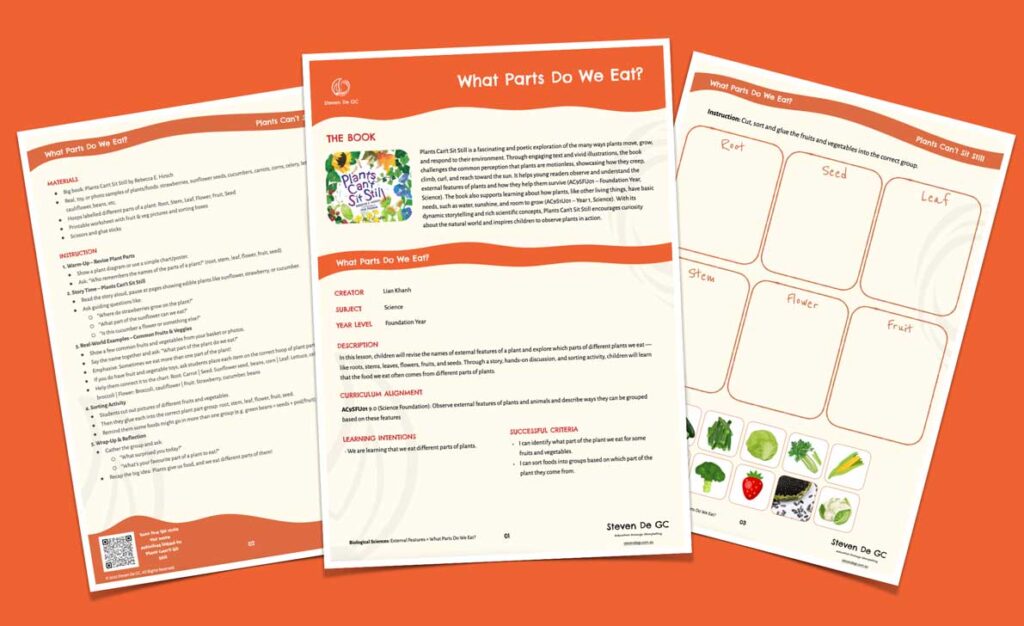
Building further on the exploration of the plant world, another engaging activity inspired by the themes in “Plants Can’t Sit Still” is “Unveiling Plant Secrets: Labelling External Features”. Step into the shoes of a botanist and investigate the visible wonders of plants! This activity focuses on recognising and labelling the external features of a plant. Children will learn the names and functions of key parts such as leaves, stems, roots, flowers and fruit. Through engaging visuals and interactive labelling exercises, they will develop a strong understanding of plant anatomy and how each part contributes to the plant’s survival and growth. Ready to become a plant expert? Discover more and try the “Labelling Plant External Features” activity by following this link. It’s time to get up close and personal with the amazing world of plants!
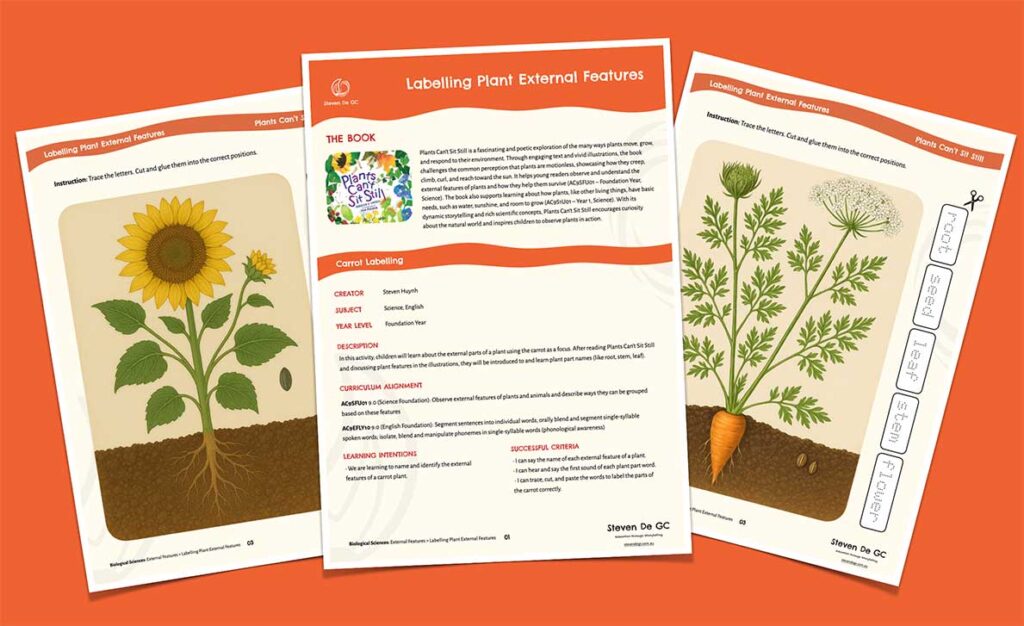
These thoughtfully selected picture books and their accompanying activities offer young learners an exciting introduction to foundational science concepts through storytelling, movement, and hands-on exploration. Whether children are clapping along to learn about their bodies, spotting animals in diverse habitats, or uncovering the secrets of plants, each resource fosters curiosity, observation, and critical thinking. With engaging visuals, rich language development opportunities, and free downloadable activities, this collection transforms science into a joyful, memorable adventure—nurturing a lifelong love of discovery in every child.





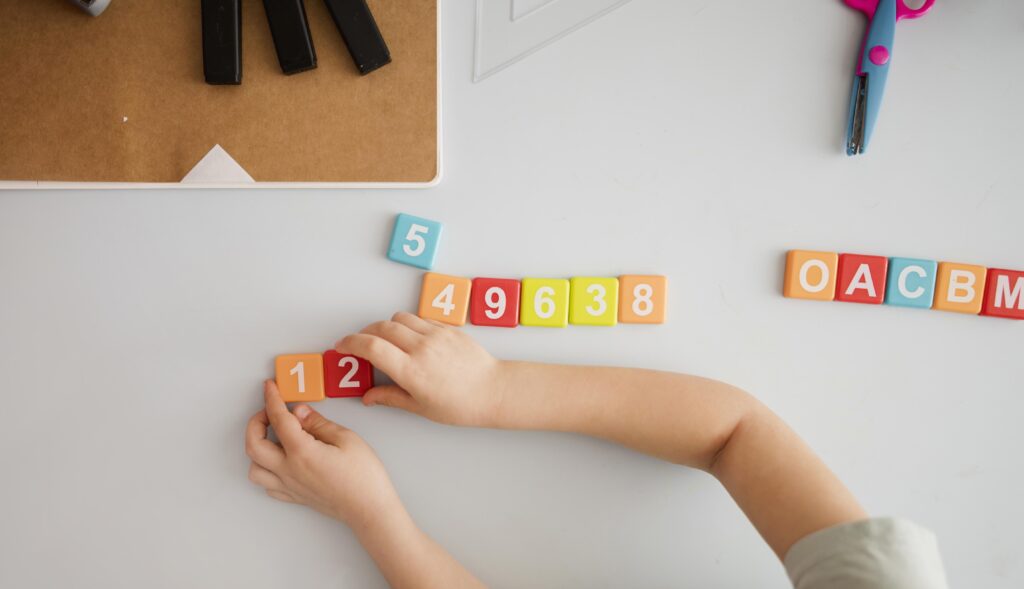
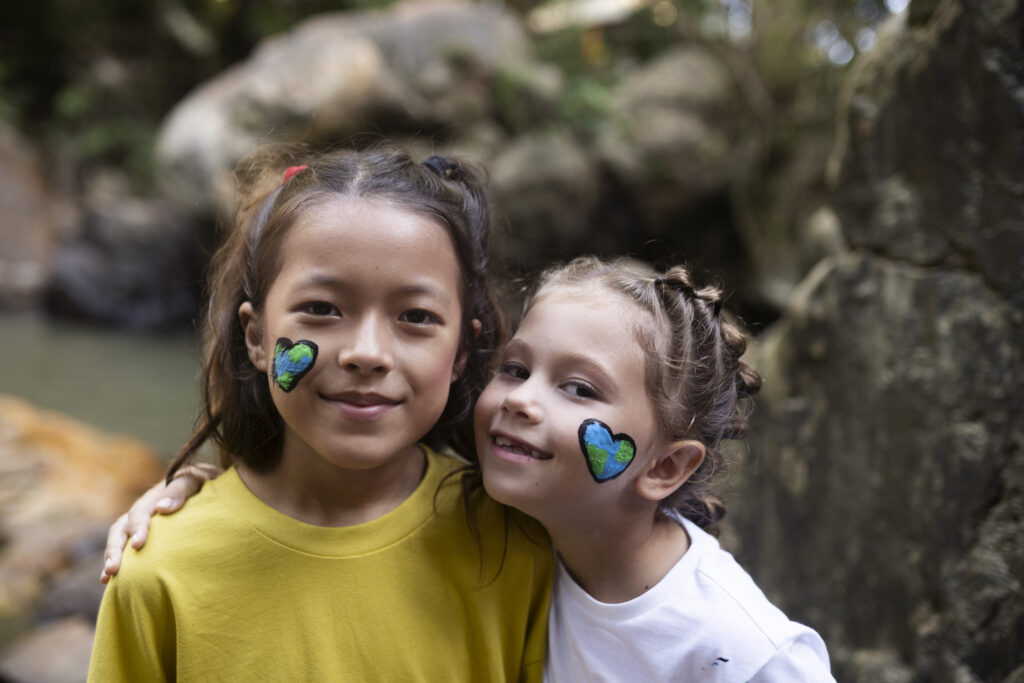
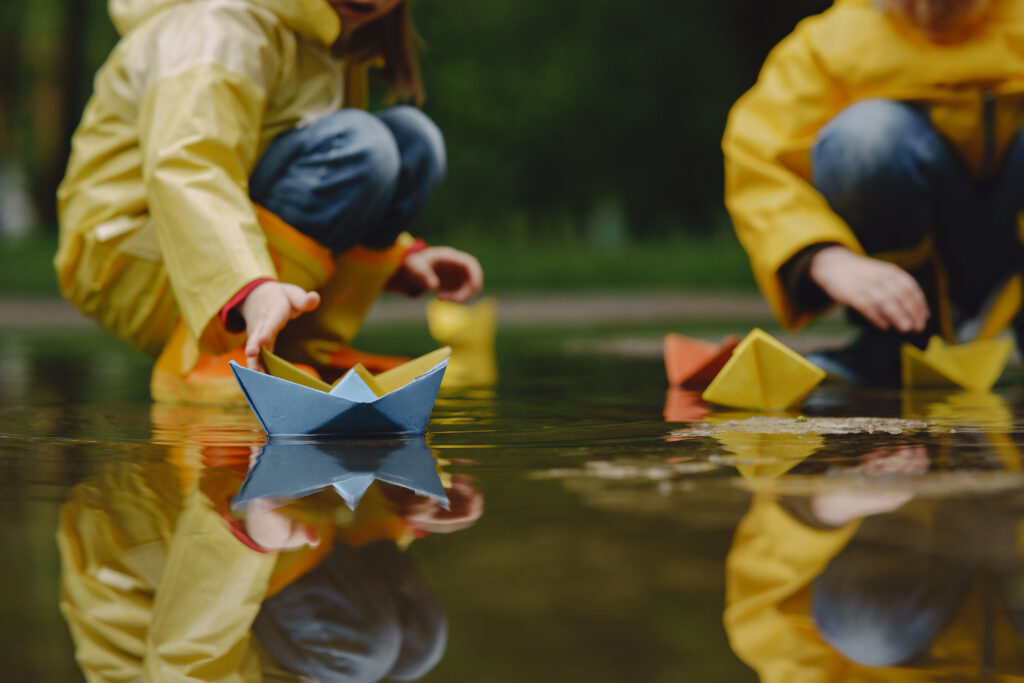

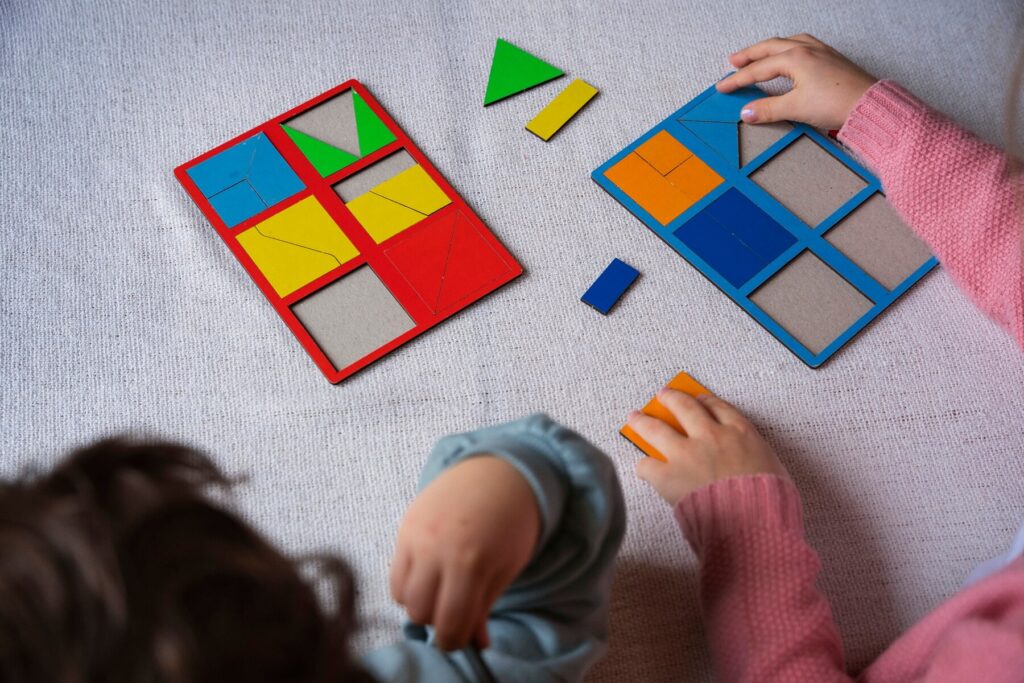




Leave a Reply